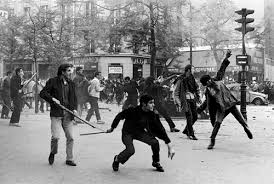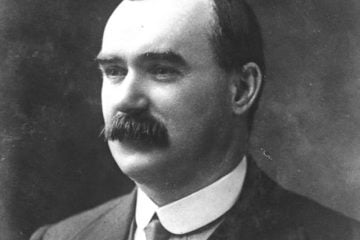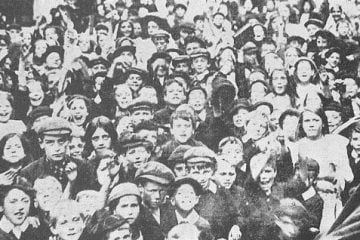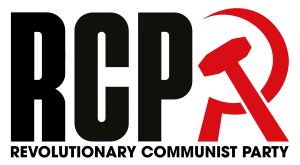It has been nearly 100 years since Trotsky was expelled from the Soviet Union. In this time, the name of Trotsky has been divided from Lenin’s, with many presenting them as against each other. This is, of course, not true. In 1969, a book called Lenin and Trotsky: What They Really Stood For, was published. This book looks at the truth of Lenin and Trotsky’s positions. Here, we republish an article written 3 years ago about the importance of this book.
Given that this year marks the 50th anniversary of the publication of Lenin and Trotsky: What They Really Stood For, one would be forgiven for questioning the relevance of such a text. After all, the book is largely a rebuttal of the lies and slanders peddled by Stalinists about Trotsky, and Stalinism collapsed years ago, didn’t it?
The reality is that the bogeyman of Trotsky the wrecker, Trotsky the ultra-left and Trotsky the adversary of Lenin is still present in pockets of the labour movement, and of course in online Stalinist circles. I would know this, as I also once believed the myths surrounding Trotsky and his ideas; had I known about this book sooner, my illusions would’ve very quickly been dispelled.
Why it was written
Ted Grant and Alan Woods wrote this book in 1969, in response to an article by a leading theoretician of the Communist Party, Monty Johnstone. Johnstone had penned an “objective appraisal” of Lenin, Trotsky and Stalin to address the renewed interest in Trotsky’s ideas among members of the Young Communist League.
It’s not hard to understand where this interest came from: following the treachery of the Stalinist parties at the time – their refusal to lead the workers to power in France, their crushing of workers’ uprisings in Prague, as well as their altogether reformist outlook as captured by The British Road to Socialism – young people began to search for more radical, more revolutionary ideas, and those ideas were to be found in Trotsky.
Despite feigning objectivity, the article is full of cherry-picked quotes, botched explanations of theory and incomplete historical details. Therefore, Grant and Woods felt it necessary to set the record straight, so that the youth would be drawn to the ranks of true revolutionary Marxism.
Despite being a fairly short text, the authors span a wide range of issues in a detailed and comprehensive manner. They deal with the historical slanders that Stalinists have levelled at Trotsky and his relationship with Lenin, as well as clarifying the theoretical and political positions of Lenin, Trotsky and Stalin and how we should evaluate them. While I will outline a handful of the topics that Grant and Woods discuss, this is by no means a substitute for reading the book, and I urge everyone to read it for themselves!
Permanent Revolution
One of the main theoretical attacks that Stalinists lay against Trotsky surrounds the question of permanent revolution, something that is very rarely portrayed accurately. Moreover, Stalinists may often try and portray Lenin and Trotsky as disagreeing over the question of how a revolution would take place in an economically backward and imperialist dominated country like Russia.
Grant and Woods point out that Lenin and Trotsky were in broad agreement that the workers and peasants alone could be relied upon to carry out the tasks of the bourgeois-democratic revolution, as the bourgeoisie would inevitably betray the revolution due to its many ties with the aristocracy and the monarchy.
To the extent that there was any difference between Lenin and Trotsky on this point, it was in the manner of expression, rather than in any political difference. Before 1917, Lenin developed the somewhat vague slogan of a “democratic dictatorship of the proletariat and peasantry”. Trotsky, in his theory of the permanent revolution, was clearer in his explanation of the balance of forces between the proletariat and the peasantry, emphasising the leading role of the workers in a revolution in an economically backward country like Russia.
Lenin came to agree with Trotsky’s theory when the course of events proved it to be correct. Lenin’s formulation lacked the clarity required to orientate the revolutionary movement against the treacherous Kerensky government which took over after the overthrow of the Tsar. As that government failed to carry out any of the basic tasks confronting the Russian masses, like land reform or concluding peace, it became clear that sharp demands posing the question of which class should have the power in society, and through what institutions, were necessary.
Lenin quickly raised the need for a workers’ government in a much sharper way, calling for “all power to the Soviets” in his April Theses. Once in power, this workers’ government would be the only force capable of meeting the needs of the masses. Not only was the working class the only force capable of carrying out basic democratic tasks in Russia, but it could only do so by carrying out the tasks of the socialist revolution, hence the ‘permanent’ (uninterrupted) nature of the revolution.
After the revolution, Lenin praised the permanent revolution as a “celebrated theory”. In contrast, Lenin chastised those such as Stalin and Kamenev, who clung on to the “democratic dictatorship” slogan long after it was clear that it was wrong, calling them “behind the times” and “on the side of the petty bourgeois against the proletarian revolution”.
The authors go on to write that Stalinists who continue to cling to vague slogans that fail to pose the question of power in the sharpest class terms, often end up allying themselves with the “progressive bourgeoisie” in revolutionary situations, always leading the masses to defeat. These people have failed to learn the lessons of 1917, and their failures have led to the disaster of the Stalinist policy of the ‘Popular Front’ and defeats in, among others, France, Iraq, Iran and in Indonesia, where the Communist Party call to support the “progressive” dictator Sukarno in the 1960s led to half a million communists being slaughtered.
The struggle against bureaucracy
One of the notable shortcomings of Stalinist “theory” is that it fails to account for the rise of bureaucracy in a scientific way (this might have something to do with the fact that Stalin himself was the figurehead of the bureaucratic caste that came to dominate the Soviet state). While Stalinists may approach bureaucracy as simply a matter of bureaucratic behaviour or bureaucratic individuals, Grant and Woods explain that Lenin and Trotsky approached it in a Marxist (i.e. scientific) way.
The bureaucracy, they explained, was a parasitic growth on the workers’ state which arose out of the isolation of the revolution in an economically and culturally backward country. Lenin was very aware of the danger of bureaucratic degeneration, at the 11th party congress he warned that “[I]f we take the huge bureaucratic machine, that gigantic heap, we must ask: who is directing whom? I doubt very much whether it can be truthfully said that the Communists are directing that heap. To tell the truth, they are not directing, they are being directed.”
Understanding this danger, Lenin created the Workers’ and Peasants’ Inspectorate to try and counter this process, putting Stalin at its head, as he was a proficient administrator. However, this position put Stalin in close contact with the bureaucrats, allowing him to court their support or replace them with his own political allies. Very quickly he had built a strong power base in the bureaucratic caste, a social group that did not have the interests of the proletarian revolution in mind.
Once Lenin was aware of the danger that Stalin posed, he threw his weight behind getting rid of Stalin and curtailing the spread of bureaucracy. In his Testament, he directly calls for the removal of Stalin, saying that he was not capable of using the power he had amassed with sufficient caution. Unsurprisingly, this testament was supressed by Stalin, and Lenin’s advice on how to curtail the rise the bureaucracy went unheeded.
Socialism in one country
Another aspect of Stalinist theory that Grant and Woods pick apart in this text is that of ‘Socialism in One Country’.
However, the authors point out that this notion is alien to the principles of Marxism; not a single Marxist had proclaimed this before Stalin did so in 1924. As Lenin emphasised, a few months before his death, “we have always urged and reiterated the elementary truth of Marxism – that the joint efforts of several advanced countries are needed for the victory of socialism.”
Even Stalin himself, in the first edition of his magnum opus Foundations of Leninism, said “[C]an the final victory of socialism in one country be attained, without the joint efforts of the proletariat of several advanced countries? No, this is impossible.” A few months later, Stalin performed a remarkable feat of theoretical innovation, by asserting the exact opposite!
Why such a sudden change of mind? Grant and Woods argue that the “theory” of Socialism in One Country suited the interests of the aforementioned bureaucracy, of which Stalin became the mouthpiece. Spreading revolution to Europe and beyond is chaotic and threatens their continued domination of the Soviet Union – what they wanted was plain sailing
Contrary to this narrow nationalism, which can only act as a brake on the working class movement, Grant and Woods call for true proletarian internationalism, explaining that this does not come from any utopian sentimentality but as a consequence of the world system that capitalism has created, requiring a world-wide movement to defeat it.
Relevance today
It’s safe to say that the teachings of genuine Marxism, as upheld by Lenin and Trotsky, have never been more relevant than they are today. In the same vein, the warnings of the failures of Stalinism should never be disregarded.
Indeed, Stalinist ideas like conciliation with the bourgeoisie still echo around the Labour movement today, with commentators like the avowed anti-Stalinist Paul Mason recently calling for a popular front with Liberal Democrats, a pro-capitalist party, to get rid of the Tories. What needs to be understood is that only when the working class act independently can they be a truly revolutionary force, as Lenin and Trotsky argued many years ago.
Realising the importance of theoretical training for building the forces of revolutionary Marxism, Grant and Woods conclude their book not by being sectarian towards those in Stalinist parties, but by appealing to them to discover for themselves the works of Marx, Engels, Lenin and Trotsky, which “contain the living lessons of the experience of the working class movement of all countries over a century and a half.”
It is in this same spirit that we should approach our disagreements with Stalinists: not by denouncing them, but by “patiently explaining” why our ideas are correct. With that in mind, I would recommend this book to anyone who considers themselves a real Marxist, as well as anyone who wishes to learn more about the difference between Stalinism and Trotskyism, so that they can better combat the distortions of Stalinism and defend the ideas of genuine Marxism in the labour movement.
Purchase Lenin and Trotsky: What They Really Stood For from wellredbooks.co.uk




1 Comment
Rojan · February 17, 2021 at 5:16 am
Red greetings